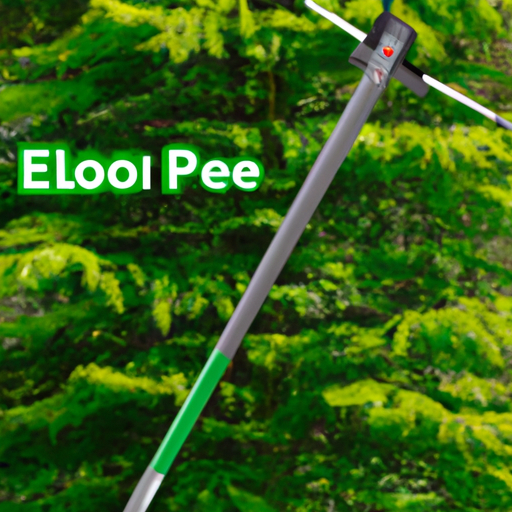In the world of tree care, knowing the best practices for tree trimming is crucial to maintaining the health and beauty of our beloved foliage. However, not all techniques are created equal. It is important to distinguish between the dos and don’ts of tree trimming in order to ensure the longevity and vitality of our leafy companions. So, which method should you avoid using? Let’s explore the answer to this question as we navigate the realm of tree trimming techniques together.
Using Dull or Improper Tools
Using dull or improper tools for tree trimming can lead to inefficient and ineffective results. When you use rusty saws or inappropriate pruners, you risk damaging the tree and creating uneven cuts. Dull tools can tear the bark instead of making clean cuts, leaving the tree vulnerable to pests and diseases. Additionally, using the wrong tools for the job can make the trimming process more challenging and time-consuming.
To ensure the best outcome for your tree, it is crucial to use sharp and appropriate tools for each trimming task. Sharp tools make clean and precise cuts, minimizing the risk of damage and promoting faster healing. Invest in quality pruning shears, loppers, and saws that are specifically designed for tree trimming. By using the right tools, you can efficiently and effectively shape and maintain your tree’s health and appearance.
Topping the Tree
Topping is a tree trimming technique that involves cutting the top section of a tree. However, it is not considered a best practice in the industry. When you top a tree, you remove a significant portion of its crown, which can weaken its structure. This weakening can make the tree more susceptible to breakage during storms or high winds. Additionally, topping can expose the tree to pests and diseases as the wounds from cutting provide entry points for pathogens.
Furthermore, topping often results in rapid regrowth of weak branches, known as water sprouts. These branches are usually poorly attached to the tree and are more prone to breakage. Instead of topping, it is recommended to use proper pruning techniques that maintain the tree’s health and shape. This includes selectively removing dead, diseased, or crossing branches to improve the tree’s structure and overall well-being.
Trimming Near the Branch Collar
Trimming near the branch collar, which is where a branch meets the main trunk or another branch, is not recommended. The branch collar contains specialized cells that help the tree heal wounds and prevent the spread of decay. When you trim too close to the branch collar or remove it entirely, you impede the tree’s natural healing process. This can increase the risk of decay and infection, potentially leading to long-term damage or even the death of the tree.
When trimming, it is important to make cuts just outside the branch collar, leaving it intact. This promotes proper healing and reduces the likelihood of complications. By following this best practice, you can help your tree recover from pruning more effectively and maintain its overall health and vitality.
Overpruning or Lion’s Tailing
Overpruning, also known as lion’s tailing, involves excessive removal of inner branches and foliage. While it may seem like a way to achieve a more aesthetic look, it is not considered a best practice in tree trimming. When you remove too many branches, you disrupt the tree’s natural balance. This can result in a crown that is top-heavy, making it more susceptible to breakage during inclement weather.
Moreover, overpruning can reduce the tree’s ability to produce food through photosynthesis. By removing too much foliage, you limit the tree’s capacity to generate energy and sustain its overall health. Additionally, overpruned trees are more prone to environmental stress and diseases. Proper pruning should aim to maintain the tree’s natural shape and foliage distribution, balancing aesthetics with the tree’s overall well-being.
Improper Timing
Timing is crucial when it comes to tree trimming. Trimming trees at the wrong time of year can negatively impact their growth and health. Pruning during the active growing season can remove vital foliage, which is essential for the tree’s ability to produce energy through photosynthesis. It can also disrupt the tree’s energy reserves.
Different tree species have specific timing requirements for pruning. Some trees benefit from pruning during the dormant season when growth is minimal. Others may require pruning immediately after flowering to maximize the next season’s bloom. Before undertaking any tree trimming, it is essential to research and understand the specific timing requirements for your tree species. This ensures that the pruning does not interrupt the natural cycles and growth patterns of the tree.
Flush Cutting
Flush cutting refers to cutting a branch flush to the trunk or parent branch. However, this technique is not recommended for tree trimming. When you make a flush cut, you create unnecessary wounds on the tree that can inhibit proper healing. Flush cuts can expose the tree to pathogens and allow decay to set in, leading to long-term damage.
To promote the tree’s health and minimize the risk of complications, proper pruning cuts should be made just outside the branch collar or bark ridge. Leaving a small portion of the branch intact allows the tree to heal more effectively, preventing the entry of pests and diseases. Practicing proper pruning techniques can enhance the tree’s overall resilience and longevity.
Leaving Stub Cuts
Leaving stub cuts, where a portion of the branch is left intact after trimming, is not considered a best practice in tree trimming. Stubs are prone to decay and can attract pests, further compromising the tree’s health. Additionally, stubs hinder the tree’s ability to compartmentalize and heal wounds effectively, leaving it vulnerable to infections.
To promote the tree’s well-being, all cuts should be made just outside the branch collar. When trimming, take care to remove the branch cleanly, leaving no stub behind. This ensures that the tree can begin the healing process promptly and reduces the risk of complications. By removing branches properly, you give your tree the best chance to recover and thrive.
Using Climbing Spurs on Live Trees
Using climbing spurs, also known as tree spikes, on live trees for tree trimming is not recommended. While spikes may provide you with better traction when climbing, they can cause significant damage to the tree. Spikes penetrate the tree’s bark and cambium layer, disrupting nutrient flow and creating entry points for pests and diseases.
Instead of relying on climbing spurs, it is best to use alternative methods when climbing trees for trimming purposes. Climbing ropes and harnesses offer a safer and less invasive way to access different parts of the tree without causing unnecessary harm. By using these less harmful methods, you can perform tree trimming while minimizing the risk of injuring the tree and compromising its health.
Ignoring Tree Health and Structure
Before embarking on any tree trimming project, it is essential to consider the health and structure of the tree. Ignoring these factors can lead to improper cuts and potentially harm the tree in the long run. Assessing the tree’s vitality, weak branches, and overall structure is crucial in determining the appropriate trimming techniques.
A healthy tree is more resilient and better able to recover from pruning. Take note of any signs of disease, infection, or structural weaknesses before trimming. By understanding the tree’s unique characteristics, you can tailor your trimming approach to ensure the best outcomes. Prioritizing the tree’s health and structure will contribute to its long-term well-being and the overall health of your landscape.
Failing to Seek Professional Help
Tree trimming can be a complex and physically demanding task. While it may be tempting to tackle the project on your own, attempting to trim trees without proper training and knowledge can be risky. It can result in accidents, damage to property, or harm to oneself.
To ensure safe and effective tree trimming, it is wise to seek professional help from certified arborists or tree care experts. These professionals have the necessary expertise and experience to assess the tree’s condition, make proper cuts, and ensure the well-being of both the tree and the surrounding environment. By entrusting tree trimming to the professionals, you can save time and effort while safeguarding your own safety and the health of your trees.


